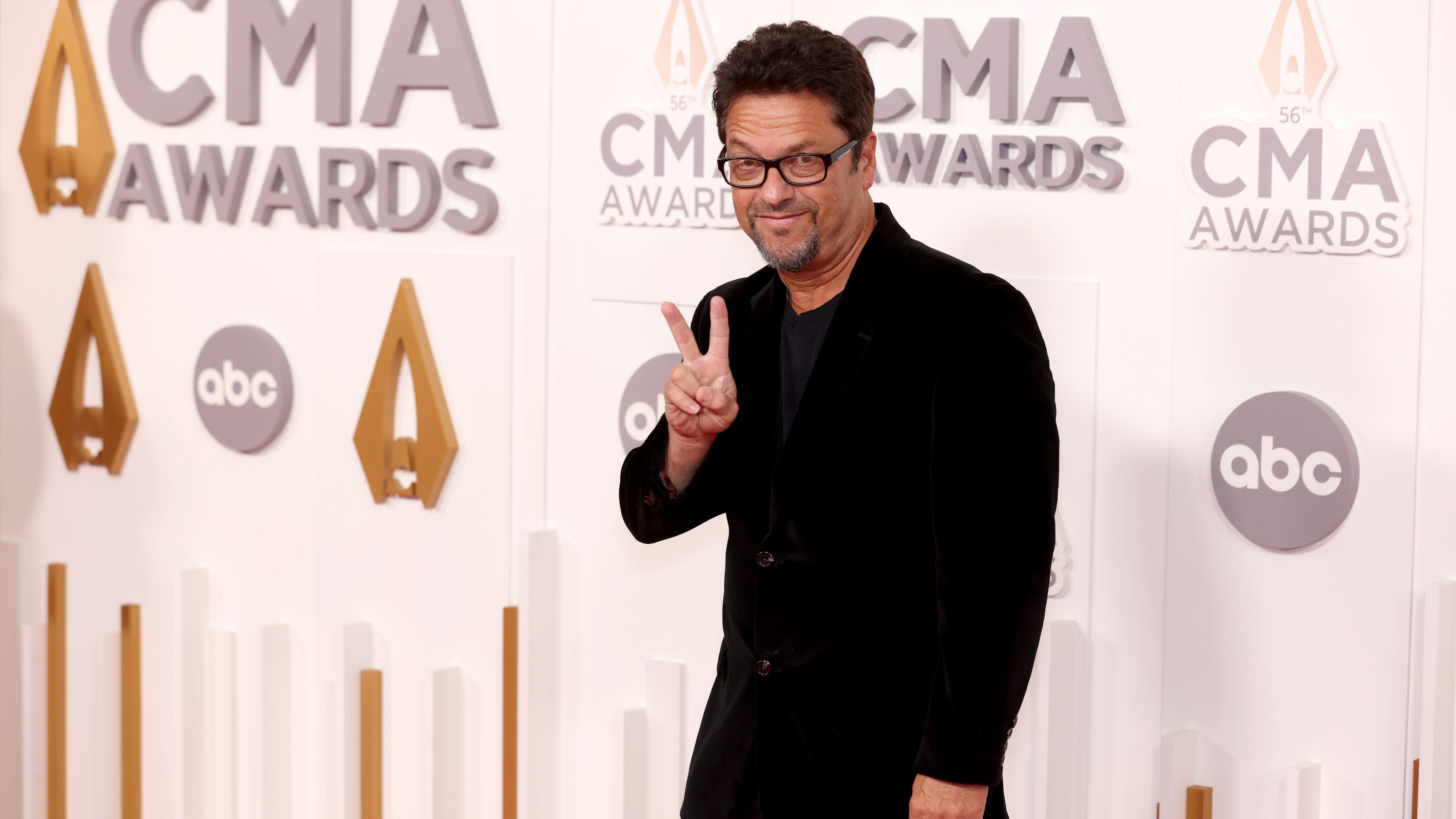“They’ll go, ‘Oh, I wouldn’t tell you what to do.’ But then you hear the record later and you’re not on it! They took you off and there’s a saxophone solo on there instead”: Ace session guitarist Brent Mason reveals how he made it to the top
And he admits: "I've messed up a lot!"

World-renowned session musician Brent Mason has played guitar on hit records for some of the biggest-selling country music stars of all time, including Shania Twain and George Strait among many others.
But as he tells MusicRadar, it took a while for him to figure out that he was a better off playing guitar than writing songs.
He recalls: “I was always thinking, ‘How can I climb the ladder and get into doing some sessions and some songwriting?’ I finally had some bites from publishing companies who said, ‘We love your songs, man, who's playing guitar on that?’ I’d go, ‘That’s me!’
“They’d say, ‘We love that. Can you play on this person’s record?’
“So it took a second to see that my guitar playing took precedence over songwriting. I said, ‘Yeah, this is my calling, to be a session player.’”
In the ’90s Mason would help to define the guitar sound of the country music revival — armed, of course, with his famous grey Telecaster.
In one of Shania Twain’s signature hits, That Don’t Impress Me Much, the solo is Mason’s.
Want all the hottest music and gear news, reviews, deals, features and more, direct to your inbox? Sign up here.
But early on in his career, Mason had some tough experiences.
“I’ve messed up a lot,” he says. “But nothing that was ever close to career-ending. And since Pro Tools came out, producers are a lot more forgiving.
Mason says that as a young player, he “put too much importance on trying to impress everybody,” and that he thought he needed to “make it the perfect session.”
He explains: “It would be hit or miss. I’d bring in a new piece of gear without trying it at all, and it would sound like shit.”
He recalls how, as a young player, he was wary of how experienced producers would react to him wasting their time.
“I’d go, ‘Oh, man, I’m sorry. Can I fix that?’ Then, you’re going, ‘Can I fix this, too? And can I fix that?'
“Too many fixes gets overwhelming, and the producers would say, ‘You’re slowing our session down, dude.’ Then, you get more nervous.”
In his early days Mason was in awe of the players doing what he hoped to do.
“You look around, and you see your heroes,” he says. “You’re just getting into session work, and it can be really nerve-wracking.”
He remembers being especially nervous when working with legendary producer Mutt Lange during the creation of Shania Twain’s Come On Over — not only the biggest selling country album in US history but also the biggest-selling studio album ever made by a solo female artist, with sales of more than 40 million.
Mason says of his time in the studio with Lange. “He was really particular. I tried my best to please him, but sometimes I’d overshoot it.”
Lange’s reputation for being a royal pain in the ass for guitarists is well-known, but Mason has a different take.
He recalls of Lange: “He was a sweetheart. He would say, ‘If you don’t get it, don’t worry about it, we’re getting closer.’
“I’d go, ‘Great!’ And Mutt would go, ‘Can I get you a cup of coffee, or a bagel?’ I’d go, ‘Oh, no, Mutt, thank you.’ He was such a sweet, bohemian kind of guy.”
But in Mason’s experience, not every producer was easy to work with.
He says: “There’s producers, who go, ‘Hey, we’re not getting this. What’s going on? It doesn’t sound like it did yesterday.’ That’s when you’re just blowing up your whole session.
“If you do that to players, they’ll never be relaxed. You need to have fun when you play. The whole idea is to make a session fun. If you throw a self-exploding bomb into a session from the producer, they ruin their own session.”
Over a long career, Mason’s stature within the session world has grown to the point where he can pick and choose his spots.
He no longer has to work long hours — unless he wants to. And, for the most part, he decides where he wants to play and when.
That’s what success gets you.
“The only trouble is usually producer trouble,” he says. “But I don’t see it much with these new guys, though. Maybe they’re just respecting me!
“Sometimes I’ll hear, ‘I used to listen to this when I was a kid, I can’t believe you were on this session.’”
But as he admits, there are still times when he gets a nasty surprise.
“They’ll go, ‘Oh, I wouldn’t tell you what to do.’ But then you hear the record later and you’re not on it! They took you off. You’ll do a solo but there’s a saxophone solo on there instead!
“But that happens to everybody,” he shrugs. “That’s just part of it.”
Andrew Daly is an iced-coffee-addicted, oddball Telecaster-playing, alfredo pasta-loving journalist from Long Island, NY, who, in addition to being a contributing writer for Guitar World, scribes for Rock Candy, Bass Player, Total Guitar, and Classic Rock History. Andrew has interviewed favorites like Ace Frehley, Johnny Marr, Vito Bratta, Bruce Kulick, Joe Perry, Brad Whitford, Rich Robinson, and Paul Stanley, while his all-time favorite (rhythm player), Keith Richards, continues to elude him.
You must confirm your public display name before commenting
Please logout and then login again, you will then be prompted to enter your display name.

